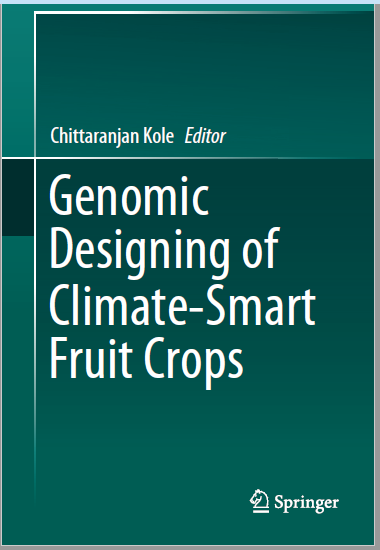View Item
- xmlui.general.dspace_homeCentros Regionales y EEAsCentro Regional Buenos Aires NorteEEA San PedroPartes de librosxmlui.ArtifactBrowser.ItemViewer.trail
- DSpace Home
- Centros Regionales y EEAs
- Centro Regional Buenos Aires Norte
- EEA San Pedro
- Partes de libros
- View Item
Genomic-based breeding for climate-smart peach varieties
Abstract
Improving the performance of peach varieties in the context of climate change requires multiple approaches. Not only will climate change alter plant phenology, but it will also drive negative effects of several biotic and abiotic stressors. The challenge is to improve adaptation of varieties to a changing environment, while maintaining organoleptic qualities of the fruit. This chapter focuses on the progress in genomics-assisted breeding in peach to break
[ver mas...]
Improving the performance of peach varieties in the context of climate change requires multiple approaches. Not only will climate change alter plant phenology, but it will also drive negative effects of several biotic and abiotic stressors. The challenge is to improve adaptation of varieties to a changing environment, while maintaining organoleptic qualities of the fruit. This chapter focuses on the progress in genomics-assisted breeding in peach to break barriers in conventional breeding. Breeding climate-smart (CS) peach trees requires the identification of CS traits used in the adaptation to high levels of temperature, CO2, water deprivation and biotic stress. Relevant CS traits, such as those that control flowering time (chilling and heat requirements), biotic and abiotic stress tolerance (pests and diseases; water-nutrient efficiency), require prioritization. Here, we review classical mapping and breeding of peach varieties, the progress and limitations of the used of marker-assisted selection and breeding (MAS and MAB, respectively) in expression of traits, such as fruit quality and stress tolerance, and describe the rationale for the use of molecular breeding.
[Cerrar]

Author
Gogorcena Aoiz, Yolanda;
Sanchez, Gerardo;
Moreno-Vázquez, Santiago;
Pérez, Salvador;
Ksouri, Najla;
Fuente
Genomic Designing of Climate-Smart Fruit Crops / editor Chittaranjan Kole. Suiza: Springer. 2020. p. 271-331
Date
2020
Editorial
Springer
ISBN
978-3-319-97946-5
Formato
pdf
Tipo de documento
parte de libro
Palabras Claves
Derechos de acceso
Restringido
 Excepto donde se diga explicitamente, este item se publica bajo la siguiente descripción: Creative Commons Attribution-NonCommercial-ShareAlike 2.5 Unported (CC BY-NC-SA 2.5)
Excepto donde se diga explicitamente, este item se publica bajo la siguiente descripción: Creative Commons Attribution-NonCommercial-ShareAlike 2.5 Unported (CC BY-NC-SA 2.5)

